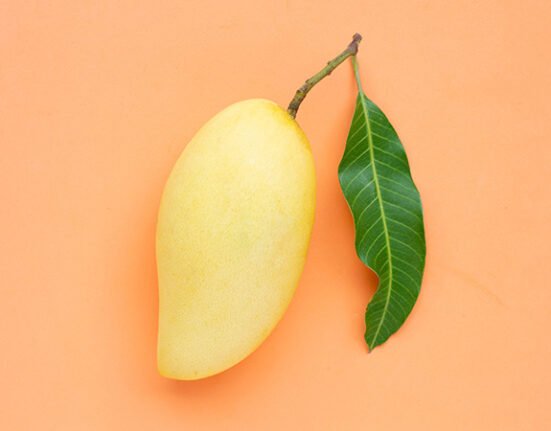When cultivating fruits indoors, selecting the appropriate varieties is crucial. Not all fruits are equally suited for indoor conditions, so thorough research is essential before making a selection. Certain fruits, such as citrus fruits (lemons, limes, and oranges), figs, strawberries, and compact varieties of apples and peaches, are well-adapted for indoor growth.
These fruits excel in containers, require minimal space, and can tolerate the lower light levels typically found indoors, making them ideal for indoor cultivation. Another critical consideration when choosing fruits for indoor growth is their maintenance and care requirements. Fruits vary in their needs, so it is essential to select varieties that align with your lifestyle and available time for care.
For instance, citrus fruits necessitate regular watering and fertilization, whereas strawberries are relatively low-maintenance and can thrive with minimal attention. By taking these factors into account, you can select the most suitable fruits for indoor growth, ensuring a thriving indoor orchard.
Key Takeaways
- Choose fruit varieties that are well-suited for indoor growing
- Use containers that provide good drainage and sufficient space for root growth
- Ensure adequate light and temperature levels for healthy fruit tree growth
- Water and fertilize indoor fruit trees according to their specific needs
- Monitor and manage pests and diseases to maintain a healthy indoor orchard
Selecting the Best Containers for Indoor Fruit Trees
Size Matters
When choosing containers for indoor fruit trees, it’s essential to consider the size of the tree, the root system, and the type of fruit you’re growing. For smaller fruit trees like citrus or figs, a 10-15 gallon container is typically sufficient, while larger fruit trees like dwarf apple or peach trees may require a 20-25 gallon container.
Material Options
In addition to size, it’s also important to consider the material of the containers. Plastic, ceramic, or terracotta containers are all suitable options for growing fruit trees indoors. Plastic containers are lightweight and easy to move around, while ceramic and terracotta containers are more aesthetically pleasing and provide better insulation for the roots.
Drainage is Key
Whichever material you choose, make sure the containers have drainage holes to prevent waterlogging and allow excess water to drain out. This is crucial to provide the right environment for your indoor fruit trees to thrive and produce healthy fruits. By selecting the right containers, you can give your fruit trees the best chance to succeed and enjoy a bountiful harvest.
Providing Adequate Light and Temperature for Indoor Fruit Trees
One of the most important factors for successful indoor fruit growing is providing adequate light and temperature for your fruit trees. Most fruit trees require at least 6-8 hours of direct sunlight per day to thrive and produce healthy fruits. If your indoor space doesn’t receive enough natural light, you can supplement with artificial grow lights to ensure your fruit trees receive the light they need.
LED grow lights are a popular choice for indoor fruit growing because they provide the full spectrum of light that fruit trees need to thrive. In addition to light, it’s important to provide the right temperature for your indoor fruit trees. Most fruit trees prefer temperatures between 60-85°F during the day and slightly cooler temperatures at night.
It’s important to place your fruit trees in a location with consistent temperatures and avoid placing them near drafts or heating vents that can cause fluctuations in temperature. By providing adequate light and temperature for your indoor fruit trees, you can create an optimal environment for them to thrive and produce healthy fruits.
Tips for Watering and Fertilizing Indoor Fruit Trees
| Fruit | Light Requirements | Temperature Range | Humidity Needs |
|---|---|---|---|
| Apples | 6-8 hours of direct sunlight | 60-75°F | 40-60% |
| Citrus (Lemons, Oranges) | 8-12 hours of direct sunlight | 55-85°F | 50-70% |
| Fig | 6-8 hours of direct sunlight | 65-75°F | 40-60% |
| Strawberries | 6-8 hours of direct sunlight | 60-80°F | 60-80% |
Proper watering and fertilizing are essential for the health and growth of indoor fruit trees. When it comes to watering indoor fruit trees, it’s important to water them consistently and avoid overwatering or underwatering. Most fruit trees prefer slightly moist soil, so it’s important to water them when the top inch of soil feels dry to the touch.
It’s also important to use a well-draining potting mix to prevent waterlogging and allow excess water to drain out. In addition to watering, fertilizing is also important for the health and growth of indoor fruit trees. It’s important to use a balanced fertilizer specifically formulated for fruit trees and follow the instructions on the label for application.
Generally, fruit trees should be fertilized every 4-6 weeks during the growing season (spring and summer) to provide them with the nutrients they need to produce healthy fruits. By following these tips for watering and fertilizing indoor fruit trees, you can ensure they receive the proper care and nutrients they need to thrive.
Managing Pests and Diseases in an Indoor Orchard
Pests and diseases can pose a threat to the health of indoor fruit trees, so it’s important to be proactive in managing them. One of the best ways to prevent pests and diseases is by practicing good hygiene and keeping your indoor orchard clean and free of debris. Regularly inspect your fruit trees for signs of pests or diseases such as yellowing leaves, holes in leaves, or sticky residue on the leaves.
If you notice any signs of pests or diseases, it’s important to take action immediately to prevent them from spreading. In addition to good hygiene, you can also use natural remedies such as neem oil or insecticidal soap to control pests on your indoor fruit trees. These natural remedies are safe for use indoors and can effectively control common pests such as aphids, spider mites, and scale insects.
For diseases, it’s important to remove any infected leaves or branches and treat your fruit trees with a fungicide if necessary. By being proactive in managing pests and diseases in your indoor orchard, you can prevent them from causing damage to your fruit trees and ensure they remain healthy and productive.
Pruning and Training Indoor Fruit Trees for Optimal Growth
Why Pruning is Important
Pruning helps to remove dead or diseased branches, improve air circulation, and shape the growth of the tree. It’s important to prune your indoor fruit trees during their dormant season (winter) to encourage new growth in the spring.
Proper Pruning Techniques
When pruning, it’s important to use sharp, clean pruning shears and make clean cuts at a 45-degree angle to promote healing.
The Importance of Training
In addition to pruning, training your indoor fruit trees is also important for promoting optimal growth and fruit production. Training involves shaping the growth of the tree by tying branches to a support structure or using stakes to encourage upward growth. This helps to create a strong framework for the tree and promote better fruit production.
Achieving Optimal Fruit Production
By practicing proper pruning and training techniques, you can shape the growth of your indoor fruit trees and promote optimal fruit production.
Harvesting and Enjoying the Fruits of Your Indoor Orchard
After all your hard work in caring for your indoor orchard, it’s time to reap the rewards by harvesting and enjoying the fruits of your labor. When it comes to harvesting fruits from your indoor orchard, it’s important to wait until they are fully ripe before picking them. Most fruits will change color or become slightly soft when they are ripe and ready to be harvested.
It’s important to handle fruits gently when harvesting them to avoid bruising or damaging them. Once you’ve harvested your fruits, it’s time to enjoy them! Whether you eat them fresh, use them in recipes, or preserve them for later use, there are countless ways to enjoy the fruits of your indoor orchard.
There’s nothing quite like enjoying a juicy orange or biting into a sweet strawberry that you’ve grown yourself. By following these tips for harvesting and enjoying the fruits of your indoor orchard, you can savor the delicious fruits that you’ve worked so hard to grow. In conclusion, growing fruits indoors can be a rewarding experience that allows you to enjoy fresh fruits year-round.
By choosing the right fruits, selecting the best containers, providing adequate light and temperature, watering and fertilizing properly, managing pests and diseases, pruning and training for optimal growth, and harvesting and enjoying the fruits of your labor, you can create a successful indoor orchard that produces healthy and delicious fruits. With proper care and attention, you can enjoy a bountiful harvest from your indoor orchard and savor the satisfaction of growing your own fruits at home.
FAQs
What are the benefits of growing fruits indoors?
Growing fruits indoors allows you to have fresh, homegrown produce year-round, regardless of the outdoor climate. It also gives you more control over the growing conditions, such as temperature, humidity, and light, which can result in healthier and more productive plants.
What are some popular fruits that can be grown indoors?
Some popular fruits that can be grown indoors include citrus fruits (lemons, limes, oranges), figs, strawberries, and dwarf varieties of apples, peaches, and cherries.
What are the key factors to consider when growing fruits indoors?
Key factors to consider when growing fruits indoors include providing adequate light, maintaining proper humidity levels, ensuring good air circulation, and choosing the right containers and soil for the plants.
What are some tips for successful indoor fruit growing?
Some tips for successful indoor fruit growing include choosing the right fruit varieties for indoor growing, providing sufficient light with grow lights if natural light is limited, and regularly monitoring and adjusting the growing conditions to meet the plants’ needs.
Can fruit trees be grown in containers indoors?
Yes, many fruit trees can be grown in containers indoors, especially dwarf or miniature varieties. It’s important to choose the right size and type of container, use well-draining soil, and provide proper care and maintenance to ensure the trees thrive indoors.
What are some common challenges when growing fruits indoors?
Common challenges when growing fruits indoors include pest infestations, diseases, inadequate light or humidity, and the need for hand-pollination in some cases. It’s important to be proactive in addressing these challenges to ensure the success of your indoor orchard.






